The Emancipation of Mexico with the Struggle of Women
As part of the 210th anniversary of the struggle for Mexican Independence, discover the role of women as shapers of the nation's destiny.
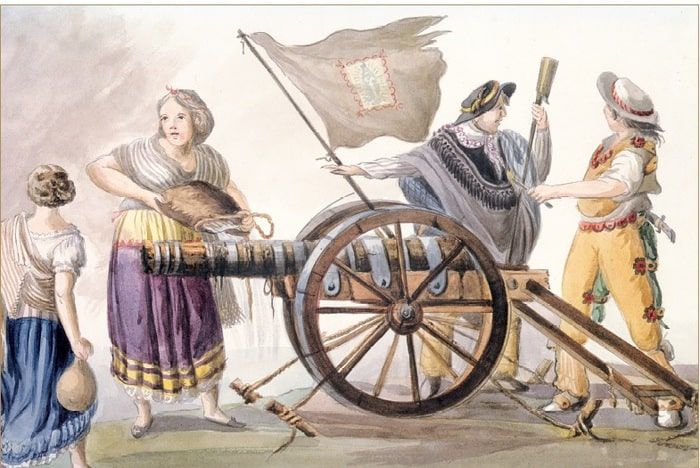
The fight for Independence, as every popular armed movement, involved the entire population. Women participated actively, not only accompanying and taking care of the men, feeding and caring for them but also as spies and couriers. Some took up arms. They were also spoils of war, raped, imprisoned, or executed, to subdue the insurgents.
The history of women in Mexico and the world was a forgotten history, until, in the second half of the last century, the social doctrine of feminism sought to have women recognized as subjects of history. From then on, new currents of historiography dedicated to social and cultural history dealt with women.
Nevertheless, some women managed to transcend from their time, in a world of men. In the Insurgency, the names of Josefa Ortiz, Leona Vicario, or Güera Rodríguez were consigned from the first chroniclers of this revolutionary process. On the other hand, during the Revolution, the anonymous collective of female soldiers transcended, more than individual names.
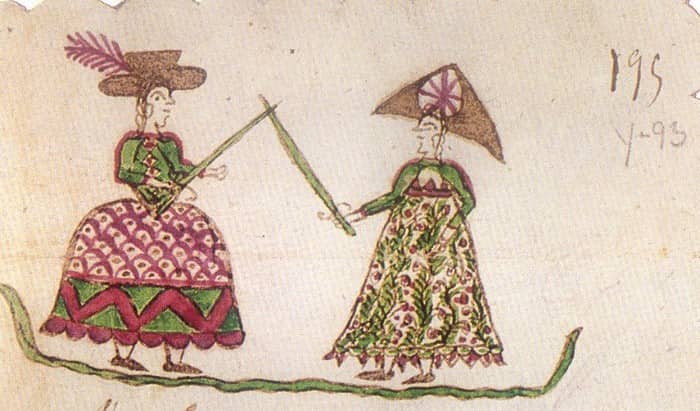
Women and Independence
When the war began, the women decided to participate as members of their community in the events. Those who opted for the insurgency commanded a small army, were nurses or spies. In the fight for independence, the insurgency had in its ranks notable women who were denounced, persecuted, and, in most cases, imprisoned.
The struggle for independence involved the entire population. Women participated actively by taking up arms but also as spies, journalists, and couriers. Women played a fundamental role in providing resources for the insurgency. For carrying out these activities, in 1814 Agustín de Iturbide, commander of the Royalist troops of the Bajio, ordered the arrest of a large group of women in Penjamo.
According to his account, there were 300 of them. They were taken by surprise while performing their daily tasks, some in the company of their children. Some of them were taken to Irapuato and others to Guanajuato; they were locked up for more than two years in the so-called Casas de Recogidas.
Women also played an important role as information providers for the insurgent troops. The case of Gertrudis Bocanegra, who collaborated as a messenger, stands out. In 1817 she was imprisoned and condemned to death in Michoacán. She didn't turn in her comrades.
Another notable informant was Leona Vicario, who was part of the secret group Los Guadalupes. In the image, we can see some of the coded communications that they sent to the insurgents about the movements of the royalists. She was arrested, but she didn't give anyone away either. Leona participated in the insurgency, with information and resources. Although she fled from her captors, her fortune was confiscated. The Congress of Chilpancingo named her "Benemérita de la Patria", in recognition of her services in the struggle for independence.
Behind enemy lines, women carried out important work against the royalist troops, either by poisoning their food or by convincing them to change sides, among them Carmen Camacho and María Tomasa Esteves.
During the war, Mariana Rodríguez del Toro's home in Mexico City became a clandestine center of support for the insurgency. There, it was planned to kidnap the viceroy, to force him to swear independence. Mariana was captured and was on the verge of being executed.
Josefa Ortiz has been recognized as the protagonist of the Independence movement for alerting the organizers of the movement that the conspiracy had been discovered and they were about to be arrested on September 15. Although she was arrested, her participation did not stop there. Josefa maintained links with the insurgents. In 1811, the viceroy was notified of Ortiz's subversive activity, and her husband, Miguel Domínguez, was warned to "make his wife behave with prudence, or she would be imprisoned for not correcting her conduct".
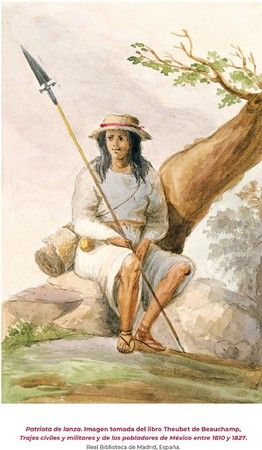
Women insurgents
During the insurgency, the names of Josefa Ortiz, Leona Vicario and Güera Rodríguez were recorded by the first chroniclers of the revolutionary process. Others, like those of Gertrudis Bocanegra, Manuela Molina and María Luisa Martínez, appeared in more recent investigations.
José Joaquín Fernández de Lizardi was one of the first to deal with the topic of female participation in the revolutionary feat. In 1825 he dedicated a calendar "to the American ladies, especially the patriots". In this publication, the Mexican thinker presented the profiles of Leona Vicario, Mariana Rodríguez de Lazarín, and Manuela Herrera, while mentioning other patriotic citizens.
In the fight for independence, women actively participated by accompanying and caring for the insurgents, but also as spies and couriers, even taking up arms. They were persecuted, imprisoned, and denounced as instigators, just as Canon Mariano Beristáin did with Josefa Ortiz. In the denunciation, it is indicated that doña Josefa promoted the insurgent cause from Querétaro, before and after the armed uprising of 1810. One of the first biographies of her life was published by Laureana Wright in 1910, in Mujeres notables mexicanas.
In Mexico City, in the home of Manuel Lazarín and Mariana Rodríguez del Toro, clandestine meetings were held in favor of the insurgents. When news of Puente Calderón's defeat and the capture of the main caudillos came out, Mariana raised her voice to propose an offensive against the royalists and, not satisfied with this, participated in the organization of actions to continue the struggle for independence. About her actions, we know about the already mentioned writing of the Mexican thinker, and the one dedicated to her by Laureana Wright in Mujeres notables mexicanas.
In a second stage of the libertarian movement, in Mexico City, the actions of Leona Vicario stood out, a young and rich heiress who provided weapons, resources, and news to those who maintained the struggle. Leona didn't act alone, but as part of a secret organization called Los Guadalupes, to which the lesser-known ladies Raz y Guzman and Del Rio also belonged.
In February 1813 the correspondence Leona had with the insurgents was discovered, for which she was detained at Colegio de Belén to be interrogated. Leona remained faithful to her cause and convictions and said nothing about Los Guadalupes. Years later she defended this position before Lucas Alaman, who described her as a lover without true ideals, denying her performance and contribution to the cause.
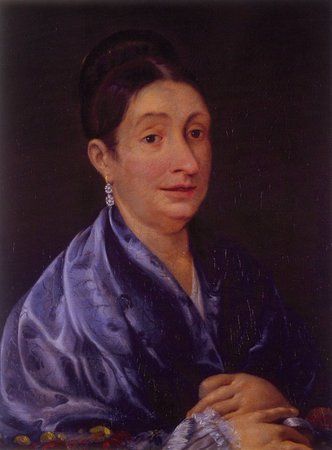
Josefa Ortiz
In the face of the crisis of the Spanish monarchy in 1808, caused by the abdications of the Bourbons Charles IV and Ferdinand VII, and in the face of the repression of the autonomist movement of the Creoles, independence conspiracies were forged that counted on the participation of women of good economic standing and social prestige.
In the Querétaro conspiracy, Corregidora Josefa Ortiz stood out. She was trained at Colegio de las Vizcaínas, in Mexico City, which was the only one that didn't depend on the clergy. She married Miguel Domínguez, a man of liberal ideas and Corregidor of Querétaro. Doña Josefa is responsible for the fact that Miguel Hidalgo and his comrades were not caught out, and immediately began the insurgent fight.
Mother of 14 children, her work in favor of the insurgency didn't stop after she was apprehended and confined to a convent between September 15 and October 1810. For her activism, she was accused of sedition and imprisoned, despite her social position. In 1813 she was again denounced as a revolutionary, for which she was arrested and imprisoned until June 1817, when she was released by order of Viceroy Juan Ruiz de Apodaca. The Congress of Queretaro named her Benemérita and her statue presides over the main square of her capital city.
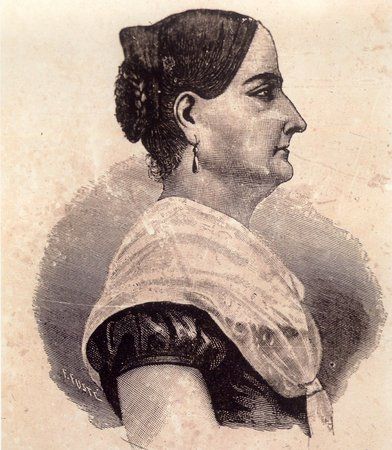
Mariana Rodriguez Del Toro
After the insurgent struggle began, clandestine meetings like those held in the home of Manuel Lazarín and his wife Mariana Rodríguez del Toro were not lacking in the Mexican capital. When the news of the defeat of the insurgents in Puente de Calderón and the capture of the main caudillos in the waterwheels of Acatita de Baján, Coahuila, was released, Mariana Rodríguez raised her voice and began to take action.
Thus, conspiratorial meetings began in the home of the Lazarin-Rodriguez family, where they planned to apprehend Viceroy Venegas, and instead of hanging him, take him prisoner and take him to Zitacuaro, where the Supreme American National Board had been installed and force him to swear independence.
When the conspiracy was discovered, Lazarin, his wife Mariana, and most of those involved were apprehended. He wanted to make an example of her but gave up after it was suspected that she was pregnant. The husbands remained imprisoned in the Corte prison until December 1820.
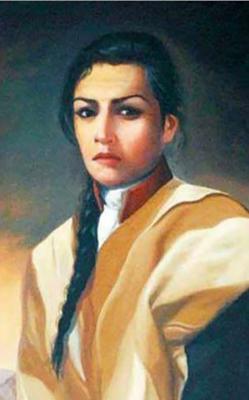
Leona Vicario
Los Guadalupes were a secret society that supported the insurgent movement. They reported on the provisions of the Spanish government and sent all kinds of aid to the cause. Their center of operations was in Mexico City and had branches in other regions of the viceroyalty. Among the women linked to this organization, Leona Vicario stands out, who signed her messages with the pseudonyms of "Telémaco", "Robinson" and "Lavoisier", a sample of her broad culture. A rich heiress, her political activism involved carrying out all possible actions in favor of the independence cause, to which she also gave her economic heritage.
When she was discovered, she was locked up in her own house until her trial in 1813. When she refused to inform about the insurgents, her property was confiscated and she was confined to the convent of Belén de las Mochas, from where she was rescued. She joined Morelos' army in Oaxaca and, from the press, promoted the fight for independence. She also administered resources and cared for the wounded. She married Andrés Quintana Roo and had her first daughter amid her escape. She was the only woman to receive congressional recognition in 1822. The also first Mexican journalist, she was declared Meritorious of the Fatherland. Her remains are found in the Independence column.
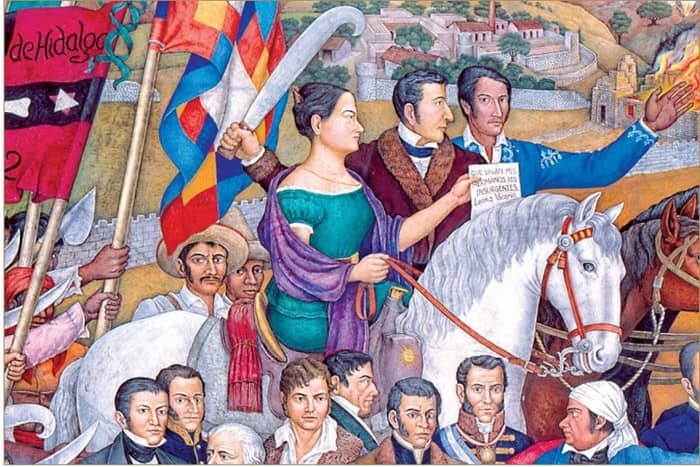
Maria Ignacia Rodriguez
Maria Ignacia Rodriguez, known as La Güera Rodriguez, transcended not only for her support of the insurgency but also for the transgression of her duty to be a woman - not of her time. In the document dedicated to Maria Ignacia at the Women's Museum, it is mentioned that she almost lost her life at the hands of her first husband, Captain Villamil. She married three times, having been widowed twice. She was accused of adultery before the Inquisition, the court did not pursue her, because she defended herself by threatening to make public the Inquisitor's affairs with her altar boy.
She was famous for her beauty; Alexander of Humboldt considered her the most beautiful woman he had known in his journeys. She was also a friend of Simon Bolivar. She served as a model for Manuel Tolsa for the Virgin of Dolores that is found in the church of La Profesa. She was a supporter of Miguel Hidalgo and played an important role in the definition of the final project that achieved the independence of North America through her relationship with Agustin de Iturbide.
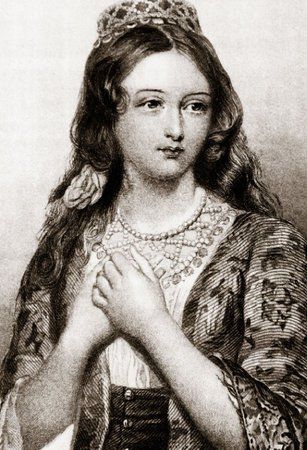
Patriotic warriors
If Miguel Hidalgo added entire towns to his ranks, Morelos sought a smaller army with greater discipline. Ignacio Allende, in his departure to the north, entrusted Ignacio López Rayón with reorganizing the insurgency. During this period, Manuela Molina stands out, captain of the insurgent army, recognized with this military grade by the Supreme Junta of Zitacuaro, for her services on the battlefields. "La Capitana" fought alongside Morelos in the occupation of the port of Acapulco consummated on April 13, 1813, and in the surrender of San Diego Castle achieved on August 20 of the same year.
María Josefa Martínez was another little known troop commander. She was a widow and led the battles dressed as a man in the area of Orizaba. Juana Bautista Márquez, alias "La Gabina", who was said to be the lover of the village priest and lady (delle), Claudio Linati, Hidalgo, as well as an anonymous "lady of Huichapan" who raised a division at her expense and led it to fight the royalists.
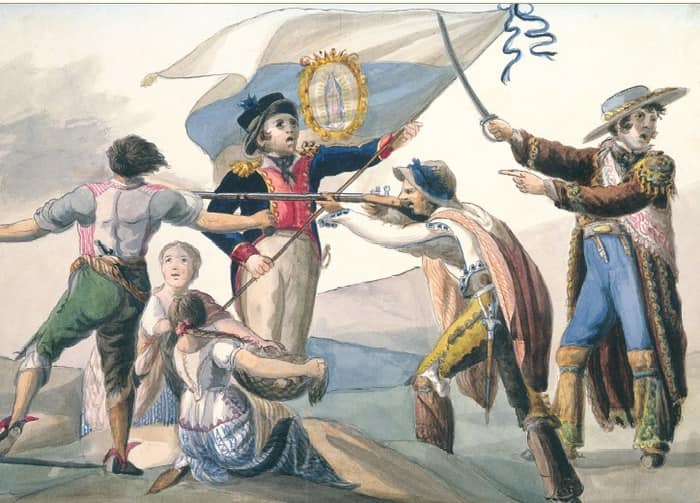
Supporters and propagandists
The war caused many women to leave their homes to accompany their husbands, but it also forced others to remain in their places of origin to protect their belongings and care for their children. Many were informants.
In this group of women, couriers identified the mestizo María Luisa Martínez, originally from the town of Erongarícuaro, where she had a small store selling food and supplies for work and home. María Luisa was an important informant. She was discovered and captured several times, so as not to be shot, 2,000 pesos were demanded of her. She returned to her store and continued to support the insurgency. Until she was apprehended for the fourth time, and unable to give the 4, 000 pesos demanded to pardon her, she was shot in a corner of the Erongaricuaro parish cemetery.
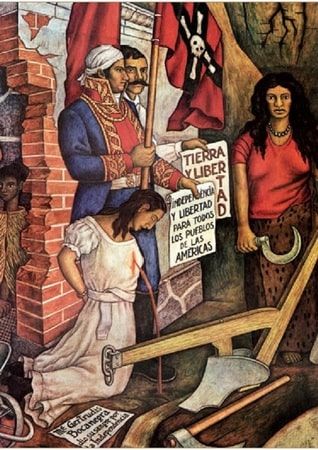
Mothers and wives in solidarity
Not only young women participated in the war. Older women like Dona Rafaela López Aguado, mother of Los Rayón, suffered persecution from the royalists. Rafaela stayed at her home in Tlalpujahua until May 1813 and then traveled to the Tierra Caliente of Michoacan-where her children fought along with her daughter-in-law Mariana Martinez and her two grandchildren. In 1815, Francisco, the fifth of her children, was taken, prisoner. The Rayon family proposed to exchange their brother for some important prisoner, but their captor didn't give in and asked in exchange for the unconditional surrender of the fortress they were protecting. The brothers left the decision to their mother Rafaela. She resolved the death of her son before the surrender.
Among those who fought alongside their husbands, María Catalina Gómez de Larrondo stands out, who led several workers and laborers and managed to capture Spanish citizens who were transported in three carriages in the gully near the haciendas of Jaripeo and El Moral, on October 7, 1810. Maria Catalina was captured in December of that year and locked up in a convent in Mexico City. She was imprisoned until 1817 or 1818 and recovered her freedom thanks to a pardon. Another wife who joined the fight was the insurgent Albino Garcia, whose name is unknown, and Antonia Nava, wife of General Nicolas Catalán, who according to legend, offered herself as a sacrifice to be eaten by her husband's besieged troops and fought with the other women to break the siege.
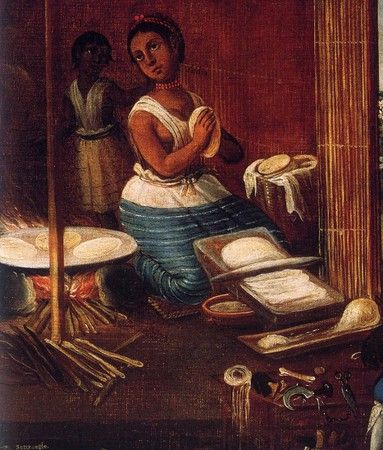
An exemplary punishment: the women of Penjamo
When the royalist troops occupied a town controlled by the insurgents, terrible persecution began against all those who had supposedly supported them. When the royalists recovered the city of Guanajuato in November 1810, they instructed a cause to doña Juana Bautista Márquez and her son José Maria, who were accused of participating in the murders committed in the Alhóndiga de Granaditas. Both were imprisoned and finally condemned to death by hanging. There were many similar cases: for the mere fact of being part of an insurgent's family, or for having a sentimental bond with them, the women were verbally and physically tormented.
The episode is known as the "Women of Pénjamo" occurred at the end of October 1814, when Agustín de Iturbide published a proclamation ordering the arrest of all the women and relatives of the rebel leaders of the Guanajuato City Hall. The arrests were made on November 29 and 30. Dozens of women were apprehended in their homes and streets of the town of Penjamo and the hacienda of Barajas. Together with their children, they were taken to Irapuato and Querétaro, where they were locked up in the collection houses (casas de recogidas).
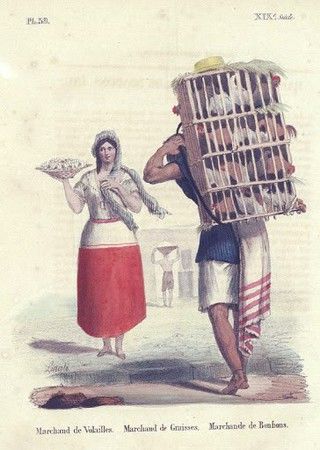
Chronology
1808
July 15th
In Mexico City, the news is received about the abdications of Charles IV and his son Ferdinand in favor of Napoleon Bonaparte.
September 15th
According to the Audience, the merchants of the Mexican Consulate designate a new viceroy, which far from controlling the situation contributes to mobilizing the criollos of the interior.
1809
Secret meetings are held to find a solution to the anomalous situation and to demand greater participation of the Americans in the government.
1810
In Querétaro, Miguel Domínguez, Josefa Ortiz, Epigmenio González Flores, Ignacio Allende, Juan Aldama, Pedro Antonio Septién, and Miguel Hidalgo are holding meetings to set up a Board of Governors, made up of "aldermen, lawyers, churchmen and other classes" appointed by the town councils, to govern in place of the viceroy.
September 11th
Mayor Juan Ochoa gives away the Queretaro Conspiracy to Viceroy Felix Maria Calleja, to whom he offers a list of conspirators, among which he mentions Josefa Ortiz. In the conspiracy, he indicates that "the wife of the Corregidor had expressed herself [with] the greatest loquacity against the Spanish nation and some ministers"; furthermore, he argued that the "torrent of that lady has led to depraved ends that I have announced" and he emphasizes that she is not "bent on attending meetings that are formed by the malevolent ones.
September 16th
In the parish of Dolores, Miguel Hidalgo calls to arms.
October 7th
María Catalina Gómez de Larrondo, in charge of several laborers and workers of her hacienda, surprises three cars with Spanish passengers in the glen of the haciendas of Jaripeo and El Moral and takes them as prisoners.
October
Morelos meets Hidalgo, on the road from Charo to Indaparapeo, who appointed him his lieutenant to raise the south in arms and take over the port of Acapulco.
When the rebellion led by Miguel Hidalgo broke out, Leona Vicario joined Los Guadalupes, who were collaborating clandestinely with the insurgents from Mexico City. She also invented a system of keys and ciphered names that she took from her favorite books to maintain communication with the insurgents.
October 30th
The battle takes place on Monte de las Cruces, where Hidalgo defeats Trujillo, then advances to the town of Cuajimalpa, but does not continue to Mexico City.
December
María Catalina Gómez de Larrondo is imprisoned "in a convent or other proportionate building" in Mexico City. Years later, she is released thanks to a pardon.
1811
January
Romero Martínez, commander of the urban battalion, notifies the viceroy of the subversive activity of Josefa Ortiz. The viceroy warns the corregidor Miguel Domínguez to demand that his wife behaves with prudence or she will be imprisoned.
January 17th
The battle of Puente de Calderón takes place, in which the insurgent army is defeated.
March 21st
Hidalgo and his companions head to San Antonio Béxar, but are apprehended in Acatita de Baján by Ignacio Elizondo.
March 26th
Hidalgo, Allende, Aldama, and Jimenez are arrested and taken to Chihuahua, the capital of the Internal Provinces, to be judged.
April
A messenger from Felix Maria Calleja arrives in Mexico City with the news of the capture of the independence leaders. Viceroy Francisco Xavier Venegas announces the news to the population and celebrates the triumph with joy.
A group that supports the movement meets at the home of Mariana Rodríguez del Toro and Miguel Lazarín. Upon learning of the capture of the insurgent leaders, at Mariana's behest, they plan to capture the viceroy to force him to free the prisoners and recognize independence.
However, the conspiracy plans are exposed by José María Gallardo. They capture everyone and plan to give Mariana an exemplary punishment, which is not carried out because of the suspicion that she is pregnant. She remains imprisoned until 1820.
July 30th
Hidalgo is shot in Chihuahua and his head is sent to Guanajuato.
August 20th
The Supreme National Board of America is established in Zitácuaro with Ignacio López Rayón as president and José Sixto Berduzco and José María Liceaga as members.
1812
Andrés Quintana Roo and Leona's cousin, Manuel Fernández, join the forces commanded by Ignacio López Rayón.
Leona Vicario remains in Mexico City collecting funds and information, also buying and sending weapons, ammunition, medicines, and supplies to the insurgent forces. She uses the pseudonym Enriqueta in her correspondence with Quintana Roo and the independence chiefs. She also manages to get the best Biscayan gunsmiths working in the Viceroyalty's master workshops to move to Campo del Gallo, in Tlalpujahua, where they are dedicated to manufacturing all types of weapons and ammunition for the insurgents.
1813
February 9th
Morelos leaves Oaxaca for Acapulco. He begins his fourth campaign.
February 25th
Leona Vicario is reported by one of his messengers to the Junta de Seguridad y Buen Orden (Good Order and Security Board) when he is arrested by the military royalist Anastasio Bustamante.
March 13th
Leona's uncle and guardian manages to get her to return to Mexico City to be interned at the Colegio de Belén, called "de las mochas", as a forced prisoner and available to the Good Order and Security Board for trial.
April 6-12
Morelos attacks the port of Acapulco.
April 9th
Morelos receives in Acapulco María Manuela Medina or Manuela Molina, an indigenous chief from the surroundings of Taxco, who holds the rank of captain, granted by the Board of Zitácuaro.
María Josefa Martínez is another little known troop commander. She leads the battles dressed as a man in the zone of Orizaba, the same as Juana Bautista Márquez, a.k.a. La Gabina; as well as an anonymous Señora de Huichapan, who raises a division at her expense to fight the royalists.
March 17 and April 22
The Board of Security and Good Order questions Leona Vicario, who confronts her judges by assuming all responsibility and refusing to rat out her fellow judges.
April 23rd
Before the conclusion of the trial, Leona is rescued from the convent by insurgent colonel Francisco Arroyave, Antonio Vázquez Aldama and Luis Alconedo.
December
The insurgent Congress grants Leona Vicario a pension as Benemérita de la Patria, of which she only receives the first monthly payment. In those days, Leona and Andrés Quintana Roo got married.
December 14th
Josefa Ortiz is accused again, this time by Dr. Mariano Beristáin y Souza, who was sent by Viceroy Felix Maria Calleja to verify the city council renewal elections in Queretaro.
December 23rd
A few days after his first denunciation, Beristáin y Souza reiterates to the viceroy his impressions about the dangerousness of Josefa Ortiz.
December 29th
The viceroy orders the arrest of the wife of the corregidor Miguel Dominguez and her driving, incommunicado, to Mexico City to be processed for infidelity. Josefa is now pregnant.
1814
January 6th
Dominguez addressed a letter to the viceroy to explain that, given his wife's arrest, he was resigning his post as Queretaro's mayor to go to the capital to defend her legally.
January 13th
Josefa Ortiz is led from the sentry box to the Convent of Santa Teresa la Antigua.
January 22nd
The deputies of Congress leave Chilpancingo for Tlacotepec.
February 1st
Miguel Domínguez again asks the viceroy to allow him to separate from the office of mayor to legally defend his wife.
February 4th
Josefa Ortiz asks for an audience with Viceroy Calleja and complains about the humiliating and scandalous way she was led from Querétaro to Mexico. She argues that she was not informed of the reasons for her arrest.
February 23rd
Josefa Ortiz says she still does not know the reason for her arrest and requests a hearing.
February 28th
Josefa writes once again to the viceroy to explain her critical family situation. Her 14 children are on the verge of destitution because of her husband's fragile health. She appeals for his compassion and argues that by law she must be notified of the crime she is accused of and proceed to trial.
Besieged by the Royalist Army, Leona Vicario and Andrés Quintana, who is a deputy in the Congress of Anahuac, travel through Tierra Caliente. Quintana is part of the commission in charge of writing the Constitution of the liberated country.
October 22nd
In Apatzingán, the Constitutional Decree for the Freedom of Mexican America is promulgated, the first constitution of Mexico.
October 29th
Agustín de Iturbide publishes a side ordering the arrest of all the women and relatives of the rebel leaders of the Guanajuato City Council.
November 29th and 30th
Dozens of women are apprehended in their homes and streets of the town of Penjamo and the Barajas hacienda. Together with their children, they are taken to Irapuato and Querétaro, where they are locked up in the collection houses.
1815
Older women, such as Mrs. Rafaela Lopez Aguado, mother of the Rayon family, suffer persecution from the royalists. Rafaela remains in her home in Tlalpujahua and then travels through the Michoacán region of Tierra Caliente with her daughter-in-law Mariana Martínez and her two grandchildren.
Her son Francisco, the fifth of her children, is taken prisoner. The Rayón family proposes exchanging their brother for some important prisoner, but their captor doesn't give in and requests in exchange for the unconditional surrender of the fortress they were protecting.
The brothers leave the decision to their mother Rafaela, but she chooses the death of her son over surrender. The Quintana-Vicario spouses follow the insurgent Congress until Andres completes his term as deputy.
September 28th
The Congress, guarded by Morelos, leaves Uruapan for Tehuacán.
November 5th
Congressional deputies and Morelos are attacked by Manuel de la Concha.
José María Morelos is captured by Matías Carrasco and taken to Tenango del Río.
December 22nd
Morelos is shot in San Cristóbal Ecatepec.
1816
Leona Vicario and Andrés Quintana live as refugees in the mountains, where they receive news that Viceroy Juan Ruiz de Apodaca offers a pardon to insurgents who lay down their arms. They refuse on two occasions.
November 16th
Josefa Ortiz is sentenced to four years in prison.
1817
February
The army of General Nicolás Bravo and his lieutenant, Don Nicolás Catalán, are forced to fortify themselves on the Cerro del Campo but are besieged by the royalist Gabriel de Armijo. They resist 50 days. That moment leaves them demoralized, decimated, and without food since they decide to kill one soldier for every 10 so that the others would have food to survive.
The women of the contingent, led by Antonia Nava, wife of Nicolás, his sister-in-law María Catalán Catalán and Catalina González de Bautista, wife of Sergeant Nicolás Bautista, consider it unfair that the soldiers are sacrificed and decide that they should do it themselves instead.
June 17th
Josefa is released by Viceroy Juan Ruiz de Apodaca, who recognizes Miguel Domínguez's right to receive a salary for his services.
In the caves of Achipextla, Leona Vicario and Andrés Quintana have their first daughter, Genoveva. They then hid in the town of Tlacocuapa, in the Sierra de Tletlaya.
Gertrudis Bocanegra is sent to Patzcuaro to help the rebels take the city. Discovered and imprisoned, she is subjected to torture to expose other guerrilla participants, but she refuses to give information to the royalists. She is finally tried and found guilty of treason.
October 11th
Bocanegra is shot in San Agustín Square, in Pátzcuaro.
October 27th
Xavier Mina is imprisoned at El Venadito ranch along with Miss Manuela Herrera, who supports the libertarian cause. She is led out of her ranch, tied up and barefoot by a soldier who mocks her until, in pity, Chief Orrante orders her to be released. Manuela does not accept to be pardoned.
1818
March 14th
Leona and Andrés are discovered by members of the Royalist Army. Andres writes a delayed pardon for Leona and flees. It's no use. Leona and her daughter are transferred to Tejupilco as detainees.
Upon learning of Leona's ill-treatment, Quintana asks the commander of Temascaltepec for a pardon and moves to Tejupilco to meet with Leona and her young daughter.
The pardon is confirmed by Viceroy Juan Ruiz de Apodaca. He orders eight thousand pesos of his confiscated goods to be given to him for exile in Spain. Later, he changes the sentence to the obligation to reside in Toluca, where they live in poverty.
1820
Leona Vicario and Andrés Quintana are allowed to return to Mexico City and their second daughter, María Dolores de la Soledad, is born.
August 22nd
Quintana Roo is admitted to the Illustrious and Royal College of Lawyers, resuming the practice of his profession.
1821
Pedro Romero de Terreros said that Agustín de Iturbide "diverted the parade of the Trigarante Army [...] so that [María Ignacia Rodríguez] could admire it from her house on Profesa Street. La Güera Rodríguez is famous for her beauty. A supporter of Miguel Hidalgo, she plays an important role in defining the final project that will achieve independence.
1822
Josefa Ortiz is offered to enter the Court of the new Mexican Empire as a maid of honor to Ana Duarte, wife of Emperor Iturbide. Josefa strongly rejects the offer.
Andrés Quintana joins Iturbide's cabinet as Undersecretary of State and the Office of Internal and External Relations. However, upon issuing criticism to the Emperor's resolutions, Quintana is dismissed and persecuted. Leona and her husband are again in Toluca.
1823
March 19th
Agustin de Iturbide abdicates.
August 8th
Leona Vicario considers it appropriate to request the return of the capital imposed on the Veracruz Consulate that was confiscated by the Spanish government.
1827
November
The Congress of Coahuila decrees that the town of Saltillo be named the City of Leona Vicario. In the capital, Leona is accused of defending the Spanish for not supporting their expulsion from the country.
1829
March 2nd
Josefa Ortiz de Domínguez dies in Mexico City.
1831
Leona and her husband founded the newspaper El Federalista Mexicano, through which they attacked the government of Anastasio Bustamante, a former royalist, and her persecutor.
Andrés Quintana is again persecuted and when Leona claims protection for her husband, he suffers the public scorn of the press at the service of the government.
Lucas Alamán, a government minister, attacks Leona's merits harshly since he accuses her of having received houses and estates thanks to "certain romantic heroism, which anyone who knows anything about the influence of passions, especially in beautiful sex, even if he has not read Madame Staël, can attribute to another, the less patriotic principle".
April 2nd
Vicario writes a strict answer that she publishes in her newspaper since the other newspapers refuse to make it known.
1838-1839
During the so-called Pastry War (Guerra de los Pasteles), the Quintana family offered their goods to face the possible French invasion.
1842
August 21st
Leona Vicario dies in Mexico City
Sources: INHREM, Mujeres insurgentes, Mujeres e independencia




